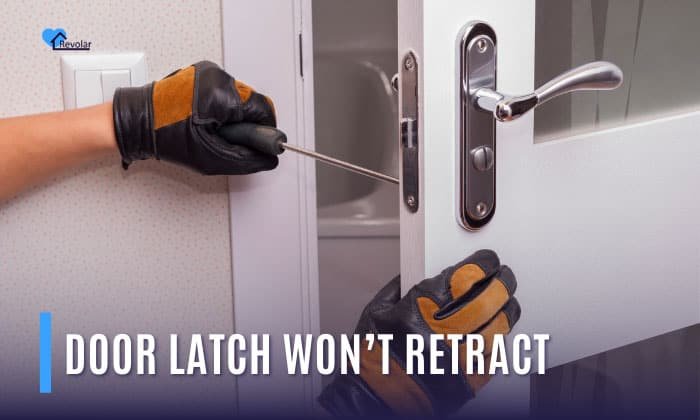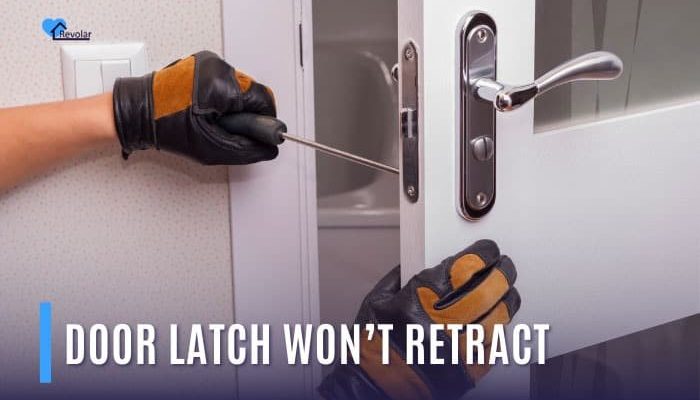
The good news is that adjusting an interior door latch bolt that won’t retract is often a straightforward task. With a little know-how, you can troubleshoot the problem and get that door back in working order. In this guide, we’ll walk through the common reasons why a latch bolt may not retract and provide step-by-step instructions on how to fix it. Whether you have a standard knob latch or a more modern lever handle, we’ve got you covered.
Common Causes of a Stuck Latch Bolt
Understanding why your latch bolt won’t retract is the first step toward solving the problem. Here are some common culprits:
- Misalignment: This usually happens when the strike plate isn’t aligned with the latch bolt. If the door frame has shifted due to temperature changes or settling, it may cause the latch to bind.
- Debris and Dust: Over time, dirt and grime can accumulate inside the latch mechanism, making it hard for the bolt to retract smoothly.
- Worn Parts: Just like anything else, latches can wear out. If the internal components are damaged or worn, they may not function as they should.
- Rust and Corrosion: If your door is in a humid area or hasn’t been lubricated in a while, rust could build up and cause the latch to stick.
Each of these issues has its own fix, but spotting the root cause is essential before diving into the repairs.
Tools You’ll Need
Before you start adjusting the latch, gather a few tools. Trust me, having everything at hand makes the process smoother. Here’s a quick list:
- Screwdriver: Usually, a flathead or Phillips screwdriver, depending on your door hardware.
- Lubricant: A silicone or graphite-based lubricant works best for door latches.
- Level: A small leveling tool can help ensure alignment.
- Hammer: A light tap might be needed to shift components back into place.
Once you have your tools ready, you’re set to tackle the latch issue.
Step-by-Step: Adjusting the Latch Bolt
Let’s break this down into simple steps. You’ll find that fixing a stuck latch bolt is manageable with some patience and careful attention.
Step 1: Inspect the Latch
Start by closely examining the latch mechanism. Check if it’s physically stuck or if it seems to be misaligned.
– Open the door slightly and try to depress the latch with your finger. If it doesn’t retract, that’s your cue to investigate further.
– Look for any visible signs of rust or debris. If you see anything, wipe it down with a cloth.
Step 2: Check the Alignment
Next, check if the latch is aligned properly with the strike plate.
– Use a level against the door and the latch assembly. If it’s off, gently tighten or loosen the screws on the latch.
– You might need to readjust the strike plate by unscrewing it and moving it slightly up or down.
Step 3: Clean the Mechanism
Cleaning is often the most overlooked step, but it can make a huge difference.
– Apply lubricant to the latch mechanism. Spray a small amount into the keyhole and around the bolt. This will help loosen any stuck parts.
– Move the latch back and forth a few times to ensure the lubricant spreads evenly.
Step 4: Test the Latch
After making adjustments, it’s time to test the latch.
– Close the door slowly and see if the latch retracts smoothly.
– If it’s still sticking, you may need to repeat the previous steps, adjusting until it works correctly.
When to Replace the Latch
Sometimes, a stubborn latch could indicate that replacement is the best option. Here are signs that it might be time to swap it out:
– Extreme Wear: If the latch is visibly damaged or doesn’t respond even after adjustments.
– Frequent Sticking: If it’s a recurring issue despite your best efforts, consider replacing it with a new latch.
– Outdated Hardware: If your latch is old and doesn’t match modern security standards, an upgrade could improve safety and functionality.
Preventive Measures
Now that your latch bolt is working again, let’s talk about how to keep it that way.
– Regular Maintenance: Clean and lubricate the latch every few months. This will help prevent rust and buildup.
– Check Alignment Often: Make it a habit to check that everything is aligned correctly, especially during seasonal changes when doors and frames can shift.
– Avoid Forced Closing: Teach family members to avoid slamming doors, as this can misalign latches over time.
Final Thoughts
Adjusting an interior door latch bolt that won’t retract can seem daunting, but with a bit of patience and the right approach, you can tackle it on your own. Remember, small maintenance tasks can save you from larger issues down the road. A well-functioning door latch not only adds convenience but also enhances your home security.
So next time you find your door latch refusing to cooperate, take a deep breath, grab your tools, and dive into the steps we covered. Before you know it, you’ll have that door swinging open with ease.
